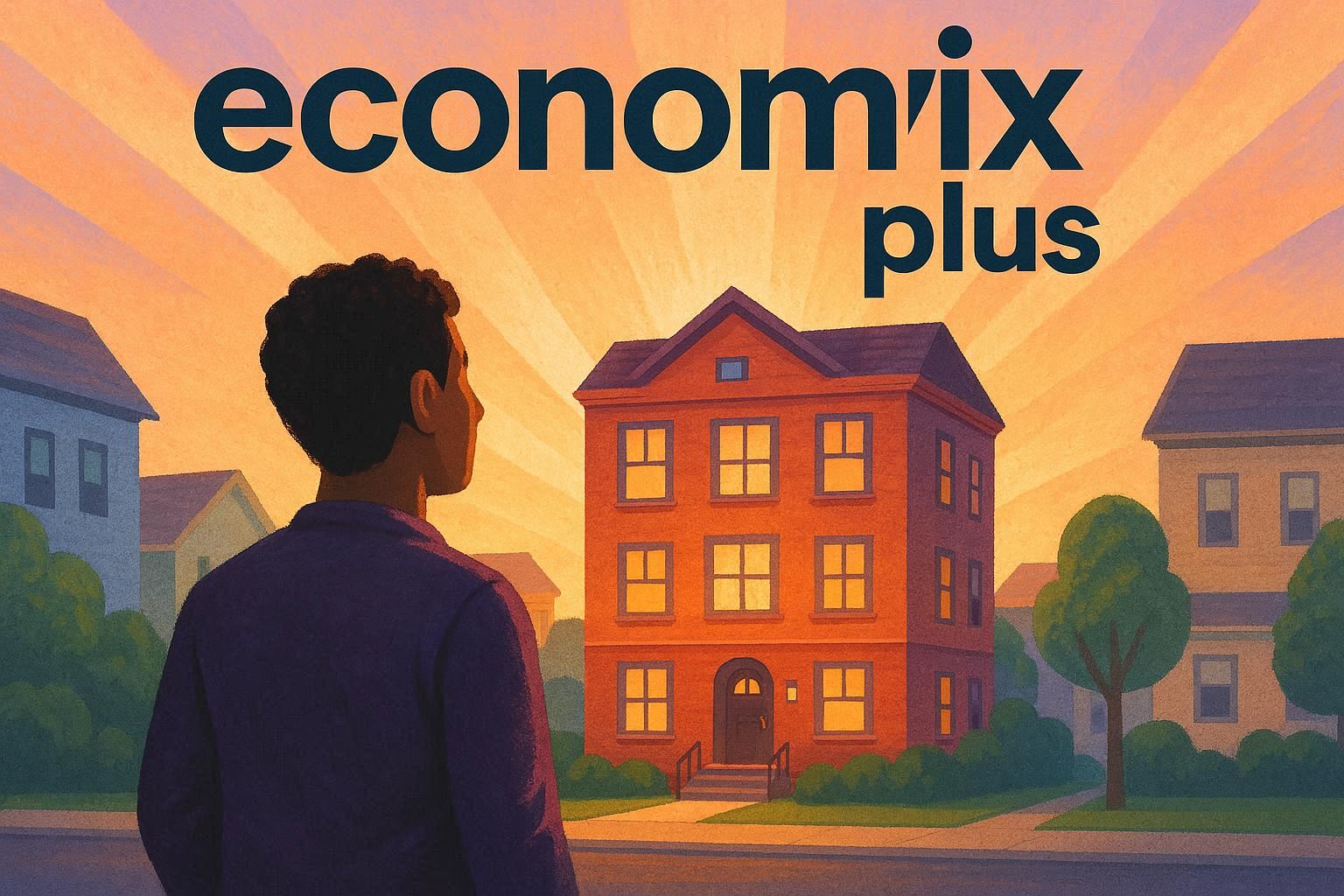Imagine knowing which neighborhoods will see property values climb months before everyone else. With home costs at historic highs and mortgage rates swinging unpredictably, timing your move could mean saving thousands—or missing out entirely. But how do you cut through the noise?
Right now, buyers face a perfect storm. Construction delays keep inventory low, while economic uncertainty makes lenders cautious. Spring sales data shows demand outpacing supply in many regions, but not everywhere. The secret lies in spotting patterns others overlook.
Regional differences matter more than ever. Some markets stagnate while others surge, driven by job growth, infrastructure projects, or shifting demographics. By analyzing local employment trends, zoning changes, and even school district upgrades, you can identify hidden opportunities.
Key Takeaways
- Regional economic shifts create localized housing demand spikes
- Construction permits and infrastructure projects signal future growth areas
- Mortgage rate fluctuations impact buyer competition intensity
- Inventory levels below 3 months’ supply often precede price jumps
- Employment hubs attract renters-turned-buyers, boosting home values
Data-driven strategies beat gut feelings every time. The following sections break down exact indicators to watch, from contractor activity to commute-time changes. You’ll learn to read the market like a pro—before bidding wars erase your advantage.
Understanding the Current Housing Market Trends
Today’s property landscape feels like navigating a maze with shifting walls. The S&P CoreLogic Case-Shiller Index reveals national home values grew just 3.4% last quarter—the slowest pace in three years. Yet this average hides wild swings between regions, creating both minefields and opportunities.
Market Dynamics and Economic Uncertainty
Mortgage rates hovering near 7% have cooled buyer enthusiasm since 2022’s frenzy. However, limited housing supply (under 3 months’ inventory in 22 states) keeps competition fierce. Tariff disputes on construction materials and shifting lending rules add layers of unpredictability.
You’ll notice three key pressure points:
- New home construction lagging 34% behind demand in fast-growing metros
- Corporate relocations driving sudden population surges in Sun Belt cities
- Retirement wave boosting 55+ community development in coastal regions
Regional Variations in Price Movements
While Northeast markets like Boston saw only 1.8% price growth, Southeastern hubs Nashville and Raleigh jumped 6.9%. Western tech centers face mixed results—Seattle stagnates as Denver rebounds. These disparities stem from localized factors:
“Markets with diversified job bases and infrastructure investments outperform those relying on single industries.”
Tracking permit approvals helps spot coming supply changes. Cities issuing 20%+ more building licenses than last year often see moderated price hikes within 12-18 months. Your strategy must adapt to these hyperlocal realities.
Analyzing Key Indicators Impacting Real Estate Prices
Decoding housing market movements requires understanding critical data points that drive value shifts. Zillow’s latest report shows inventory levels 28% below pre-pandemic averages, indicating a significant tightening of supply that can lead to increased competition among buyers. This scarcity is particularly impactful in areas experiencing job growth and economic stability.
Meanwhile, NAR data reveals homes sell 18% faster than in 2022, reflecting a heightened demand that outpaces available listings. These metrics form the foundation of predictive analysis, suggesting that as demand continues to surge against limited supply, we may see further upward pressure on prices in the near future.
Inventory Levels and Buyer Demand
When available properties dip below three months’ supply, markets tip toward sellers. Current deficits in 35 major metros create fierce competition, with 43% of buyers making offers above asking price. Watch for these patterns:
- Multiple-offer situations increasing 22% year-over-year
- Days-on-market dropping below 14 in high-demand zones
- Contingency waivers becoming standard practice
Mortgage Rate Trends and Their Effects
A 0.5% rate change alters buying power by $25,000 for median-priced homes. Recent Freddie Mac figures show 30-year loans averaging 6.87%, creating affordability ceilings.
“Every quarter-point movement shifts 1.2 million households into or out of qualifying ranges,”
Savvy investors track weekly rate surveys and Fed meeting calendars. When lenders adjust credit standards, demand redistributes to lower-priced markets within 60-90 days. Pair this data with employment reports to spot emerging opportunities.
Regional Hotspots for Upcoming Price Rises
Economic tides reveal hidden opportunities in unexpected places within the real estate market. Recent NAR forecasts highlight metro areas where housing inventory sits below 2 months’ supply—a red flag for competitive housing markets. These zones combine tight stock with expanding job bases, creating perfect conditions for value jumps in home sales.

Charlotte and Knoxville exemplify this trend. Both cities saw 15% population growth since 2020 while permitting only 9% more homes. Local incomes rose 6.2% annually, outpacing national averages. This imbalance pushes home price tags upward, especially with tariffs adding $18,500 to average construction costs.
Top U.S. Cities to Watch
Comparative data shows why some markets thrive. Check this table tracking key indicators:
| City | Job Growth (2024) | Inventory (Months) | Price Growth Forecast |
|---|---|---|---|
| Charlotte, NC | 4.1% | 1.7 | 8.9% |
| Knoxville, TN | 3.8% | 1.4 | 11.2% |
| Austin, TX | 5.3% | 2.1 | 7.4% |
| Raleigh, NC | 4.6% | 1.9 | 9.8% |
Mortgage rates below 7% could accelerate these trends. Homeowners in high-growth areas gain equity faster—Knoxville properties appreciated 24% since 2022. Watch cities attracting remote workers and healthcare expansions. Their housing markets often heat up 6-12 months before national averages reflect changes.
Focus on regions where new infrastructure projects intersect with limited building permits. These constraints create payment pressure that drives up values. Pair this insight with weekly mortgage application reports to time your moves strategically.
Leveraging Data and Forecasts for Smarter Decisions
Crunching numbers beats crystal balls in today’s housing markets. Recent Census Bureau reports show median sales prices climbed to $420,800 in April 2024—a 4.3% jump from last year. This increase not only reflects a growing demand for homes but also indicates a potential shift in buyer behavior as more individuals seek to invest in real estate. Understanding these trends is crucial, as this data reveals patterns that shape smarter strategies for buyers and investors alike. With prices on the rise, buyers may need to act quickly to secure favorable deals, while investors can leverage this information to identify lucrative opportunities in emerging markets.

Interpreting Recent Home Sales Data
Track sales velocity and price trends to gauge momentum. Markets with under 30 days on-market and 95%+ listing price retention signal rising competition. For example, HUD data shows 22 metros where 45% of April transactions exceeded asking prices.
Three metrics matter most:
- Monthly inventory turnover rates (below 2 months = seller advantage)
- Price adjustments per listing (declining discounts indicate demand)
- First-time buyer participation (above 40% suggests sustainable growth)
Insights from 2025 Forecasts
HUD’s 2025 projections highlight 6.1% price growth in markets with expanding tech/healthcare sectors. Their analysis of 350 counties shows:
“Areas adding 5,000+ jobs annually will see housing demand outpace supply by Q3 2025.”
First-time buyers should target regions with new down payment assistance programs—32 states expanded these services in 2024. Pair this with local permit approval rates to avoid oversaturated markets.
Weekly price-per-square-foot trends often predict shifts 90 days before median prices react. Tools like HUD’s Resource Finder help decode complex datasets into actionable plans. By focusing on verifiable metrics rather than speculation, you build decisions on bedrock—not sand.
How to Spot Areas Where Real Estate Prices Will Rise Soon?
Locating undervalued neighborhoods requires combining hard numbers with street-level insights. Savvy investors blend quantitative analysis with qualitative checks to find hidden gems before mass demand hits. This means looking at key indicators such as historical price trends, demographic shifts, and local economic developments. Additionally, engaging with community members and local business owners can provide invaluable context that raw data alone cannot offer. By understanding the nuances of a neighborhood’s character and potential, investors can make more informed decisions that lead to successful outcomes.

Tactical Strategies for Identifying Growth
Track these three metrics weekly to spot emerging opportunities:
- Sales velocity: Neighborhoods where homes sell in under 10 days often see price jumps next quarter
- Permit growth: Municipal websites showing 20%+ year-over-year construction approvals signal developer confidence
- Rent-to-price ratios: Areas where monthly rents exceed 1% of purchase prices attract investor attention
| Metric | Threshold | Action |
|---|---|---|
| Days on Market | <14 | Prioritize offers |
| Price Reductions | <5% listings | Expect competition |
| New Businesses | 3+ openings/month | Monitor job growth |
Utilizing Local Market Data
Zillow’s Housing Demand Index and NAR’s weekly reports reveal micro-trends. Cross-reference these with:
- School district boundary changes
- Public transit expansion plans
- Commercial lease renewal rates
“Neighborhoods with 5+ coffee shops per square mile see 18% faster appreciation than areas without.”
Set Google Alerts for local zoning meetings and infrastructure bids. Pair this intel with mortgage rate forecasts – regions with rates below 6.5% often see faster buyer mobilization. Drive target areas weekly, noting “For Rent” signs converting to “Sold” postings.
Understanding the Role of Mortgage Rates and Home Equity
Your monthly housing costs hinge on two powerful forces: loan terms and property value growth. Current 30-year fixed rates at 6.87% add $1,100 more to payments compared to 2021’s 3% averages. This shift reshapes what buyers can afford—and how homeowners leverage built-up value.
Payment Pressures and Financial Flexibility
Every 0.25% rate hike reduces purchasing power by $15,000 for median-priced homes. NAR data shows the average monthly payment now hits $2,200—42% higher than pre-pandemic levels. Three critical patterns emerge:
- Markets with 20%+ equity gains see fewer distressed sales during downturns
- Buyers allocating 35%+ of income to payments risk budget strain with future increases
- Zillow forecasts 5% price jumps in regions where equity growth outpaces rate hikes
“Homeowners with $100k+ equity cushions can better weather market shifts through refinancing or strategic sales.”
| Year | Avg Rate | Median Payment | Equity Buffer |
|---|---|---|---|
| 2021 | 3.0% | $1,100 | $56k |
| 2024 | 6.87% | $2,200 | $206k |
Rates below 7% still attract buyers in high-equity markets, as these rates create a more favorable environment for potential homeowners. The psychological barrier of the 7% threshold often influences buyer sentiment, making homes seem more accessible. Track your metro’s payment-to-income ratio using HUD’s affordability calculator, which helps gauge how much of your income goes towards housing costs, ensuring you remain within a sustainable budget. Pair this with quarterly equity reports from CoreLogic to assess financial flexibility, as these reports provide critical insights into local market trends and equity growth, allowing you to make informed decisions about your investments and financial planning.
Savvy planning means modeling payments at 8% rates—even if today’s numbers look lower. This stress-test approach reveals true long-term commitments. Markets with balanced equity growth and moderate rate projections offer safer entry points for new purchases.
Investor Considerations in a Shifting Market
Navigating today’s property markets demands a chess master’s foresight. The NAR Forecast Summit projects 4.7% annual price growth through 2029 in regions with expanding tech and healthcare sectors. Markets showing sustained job creation (+3% yearly) and population inflows (+1.5% annually) typically outperform national averages by 22% over five-year periods.
Long-Term Investment Outlook
Focus on metros where employment growth outpaces housing starts. Current data reveals:
| City | Job Growth | Inventory (Months) | 5-Year Projection |
|---|---|---|---|
| Phoenix, AZ | 4.3% | 1.8 | +27% |
| Atlanta, GA | 3.9% | 2.1 | +24% |
| Dallas, TX | 5.1% | 1.6 | +31% |
| Boise, ID | 2.7% | 3.4 | +18% |
These figures highlight why strategic entry points matter. Markets with below-average rate volatility (under 0.5% monthly swings) historically deliver 9% better returns during economic shifts.
Preparing for Market Volatility
Build resilience through three key tactics:
- Geographic diversification across multiple price tiers
- Hybrid financing combining fixed-rate and adjustable loans
- Equity reserves covering 12+ months of payments
“Portfolios blending 60% growth markets with 40% stable-income regions weather downturns 37% better than concentrated holdings.”
Monitor mortgage rate forecasts from independent services like MBA Weekly Survey. When 10-year Treasury yields cross 4.5%, expect lenders to tighten credit within 90 days. Pair this with local permit data—cities approving 15% fewer builds than demand suggest future price surges.
Utilizing Trend Analysis for Informed Investments
Smart investors decode patterns before they become headlines. Trend analysis combines population shifts, employment data, and housing metrics to reveal upcoming opportunities. The National Association of Realtors’ 2024 Forecast Summit highlighted markets where 4%+ job growth correlated with 12% home price jumps within 18 months.
Decoding Growth Signals
Three indicators consistently predict value surges:
- Metro areas adding 5,000+ jobs annually
- Counties with 2%+ population growth from migration
- Cities where new permits lag demand by 20%+
Phoenix and Austin exemplify this pattern. Both saw tech sector expansions create 8:1 job-to-housing unit ratios since 2022. Their median prices rose 19% while national averages climbed just 6%.
| City | Job Growth | Population Change | Price Increase |
|---|---|---|---|
| Austin, TX | 5.3% | +7.4% | 22% |
| Phoenix, AZ | 4.1% | +6.8% | 18% |
| Nashville, TN | 3.9% | +5.2% | 16% |
“Markets blending job growth with housing shortages show the clearest growth trajectories.”
Track weekly building permit approvals and school enrollment data. Cities issuing 15%+ more permits than last year often stabilize prices, while districts with rising student numbers signal family demand. Pair this with analyzing market trends through migration reports to spot undervalued areas.
Historical patterns remain crucial. Markets that weathered the 2008 crash with under 10% price drops now show 9% annual gains. Use Census migration data and Fed rate projections to balance quantitative insights with local infrastructure plans.
Modern Real Estate Investment Strategies (Without Traditional Interest-Based Savings Tools)
Breaking free from conventional banking models opens new paths for property investors. Creative financing methods now dominate markets where 37% of transactions avoid traditional mortgages. These approaches help you sidestep rate volatility while building equity faster.
Alternative Financial Approaches
Seasoned investors use three non-traditional methods to grow portfolios:
- Shared equity agreements: Partner with residents who contribute home upgrades for ownership stakes
- Lease-to-own structures: Convert rental payments into future down payments
- Seller financing: Negotiate direct payment plans without bank intermediaries
“Investors using alternative financing close deals 22% faster than those relying solely on mortgages.”
Federal land opportunities offer another avenue. BLM auctions in Western states let you acquire undeveloped plots for 60% below market rates. Pair these purchases with modular home placements to create instant equity.
| Strategy | Equity Growth | Timeframe |
|---|---|---|
| Home equity partnerships | 12-18% annually | 3-5 years |
| Land development | 25-40% | 2-4 years |
| Portfolio loans | 8-10% | 5+ years |
Follow this framework to implement modern strategies:
- Analyze local rent-to-price ratios using Zillow Data
- Identify homeowners with 50%+ equity for partnership pitches
- Monitor Treasury yield trends to time land acquisitions
Markets with stable job growth and limited housing stock respond best to these methods. You’ll bypass bidding wars while securing properties at 2019 price levels in emerging neighborhoods.
Conclusion
Mastering real estate opportunities requires blending market awareness with strategic action. Regional job growth, inventory levels below three months’ supply, and shifting mortgage rates remain critical indicators for predicting value surges. As seen in high-growth cities like Charlotte and Austin, housing shortages paired with infrastructure investments often create ideal conditions for equity gains.
Successful buyers track building permits and employment reports while avoiding traditional savings tools. Modern approaches like shared equity agreements or lease-to-own structures often outperform conventional methods, especially in markets with tight inventory. The critical factors shaping home values—from demographic shifts to interest rate impacts—demand constant monitoring.
Prioritize areas where rental demand outpaces available units and new businesses cluster. These zones typically see house prices climb 6-12 months before broader market shifts. Pair local school district upgrades with commute-time analytics to spot undervalued properties.
Stay ahead by subscribing to regional housing reports and setting alerts for zoning changes. With data-driven strategies and alternative financing, you can build wealth despite fluctuating rates. Knowledge transforms uncertainty into advantage—act before the crowd catches on.















Post Comment